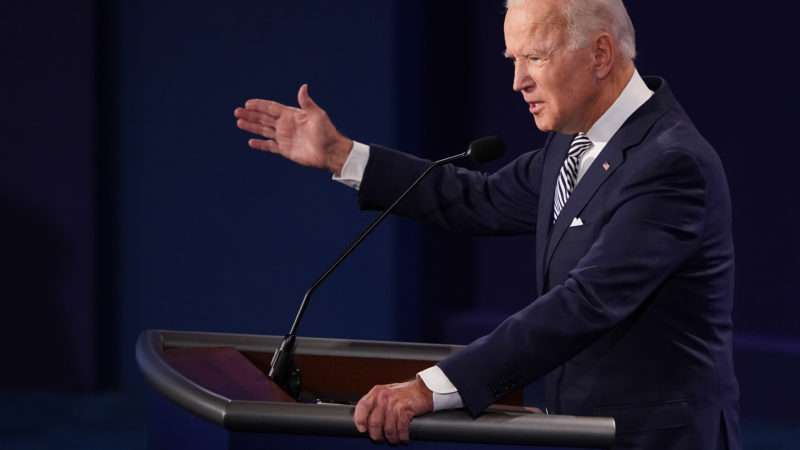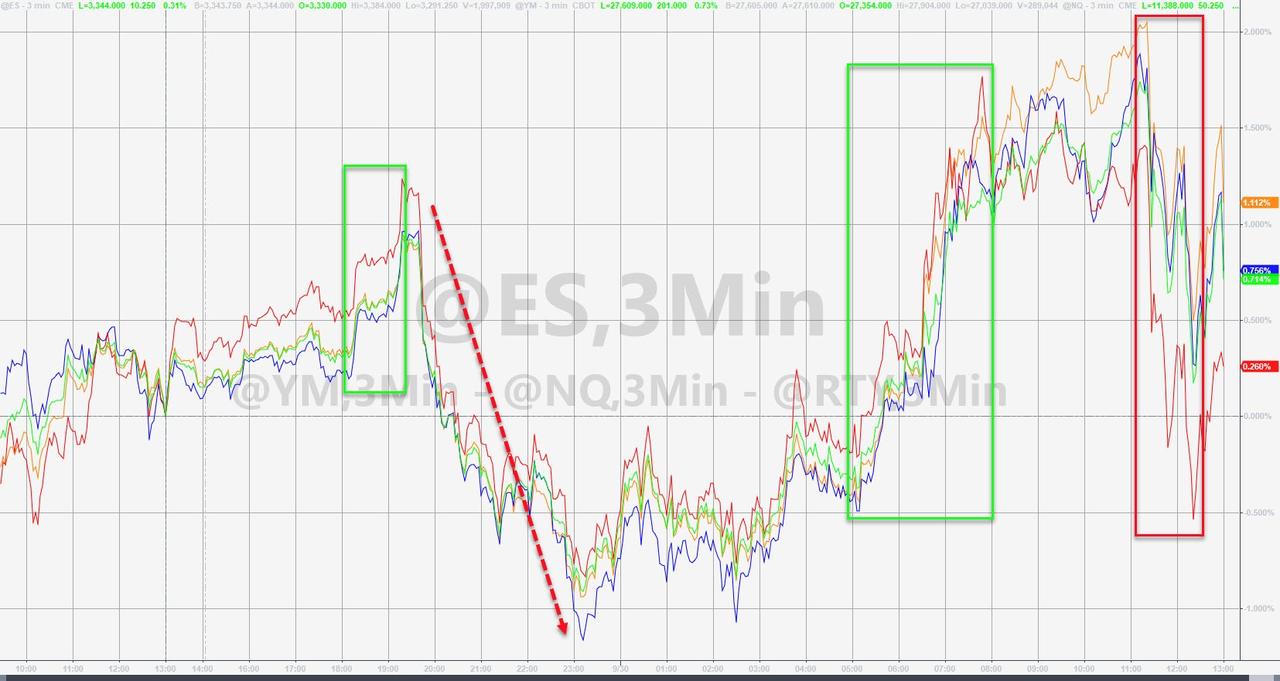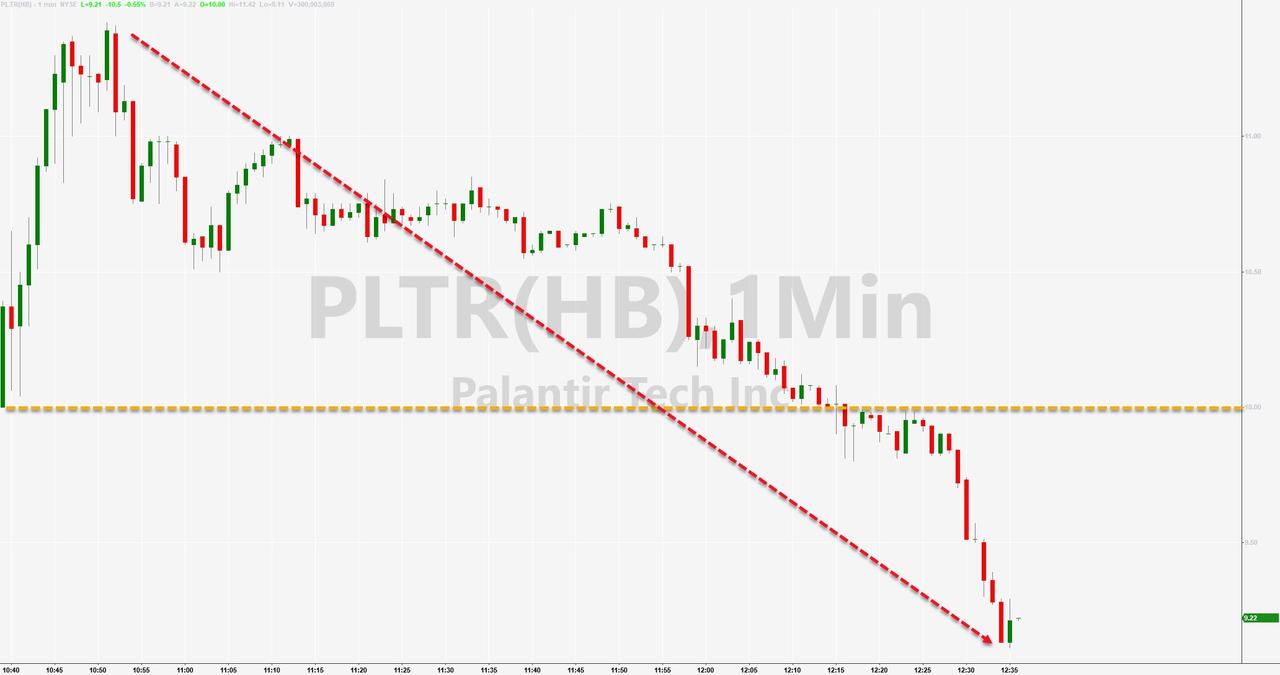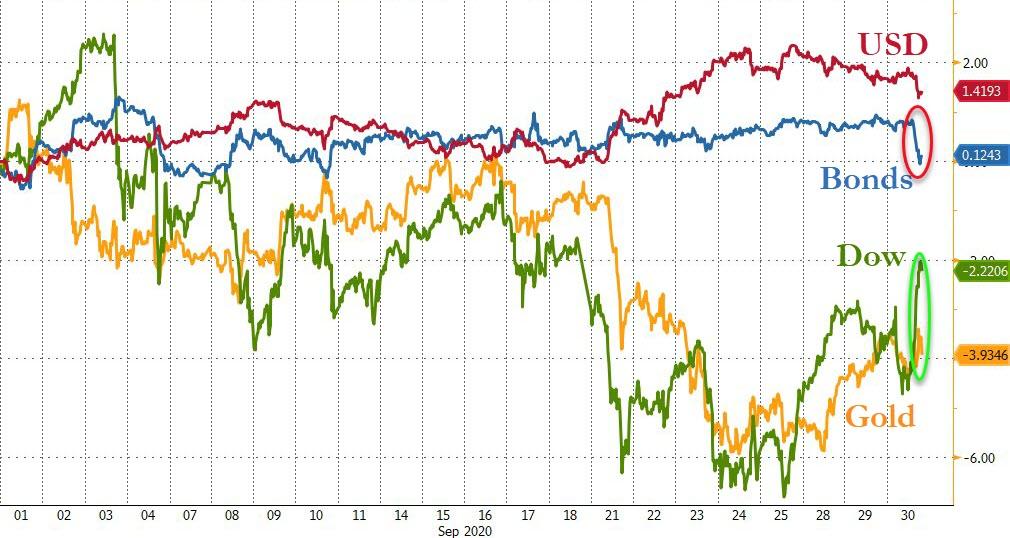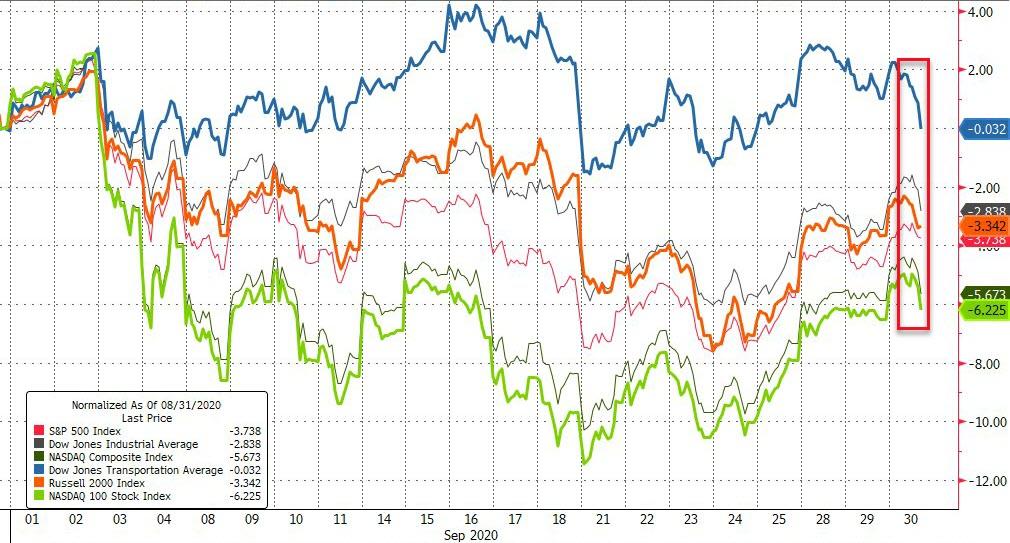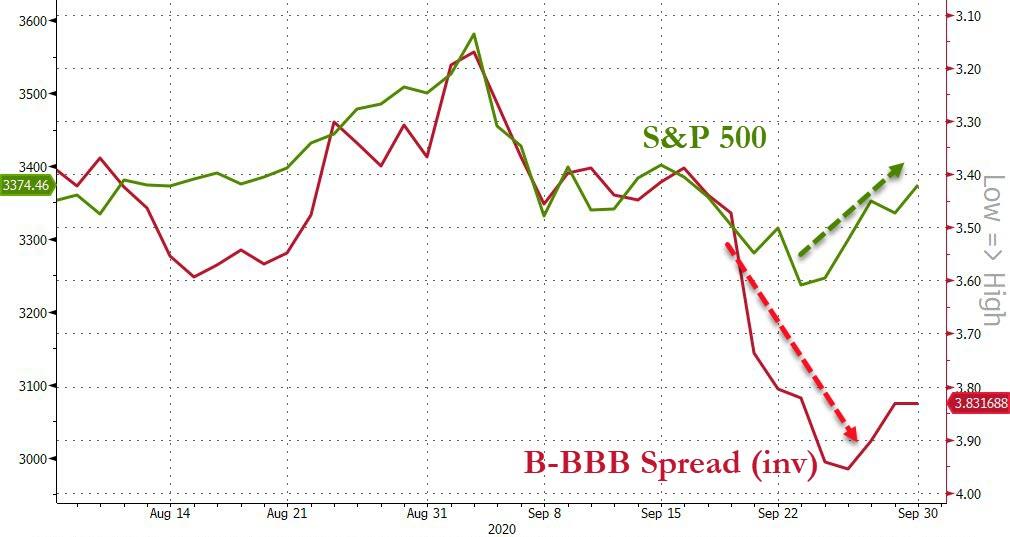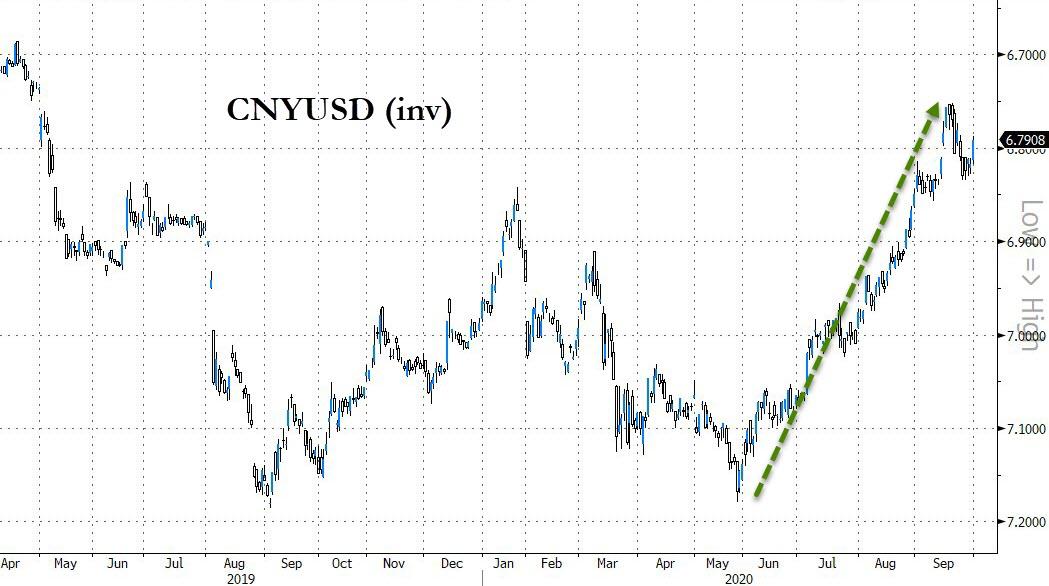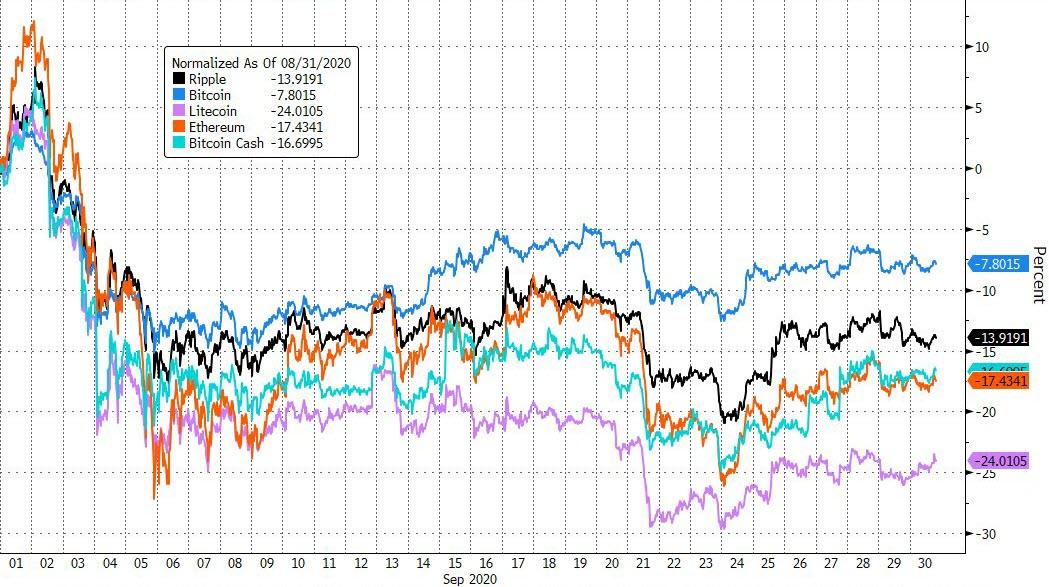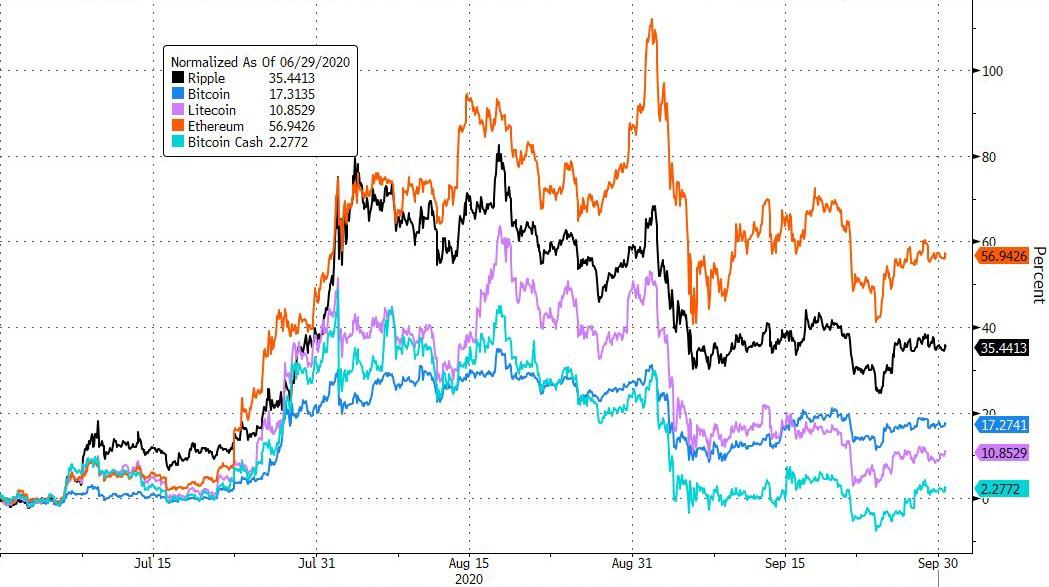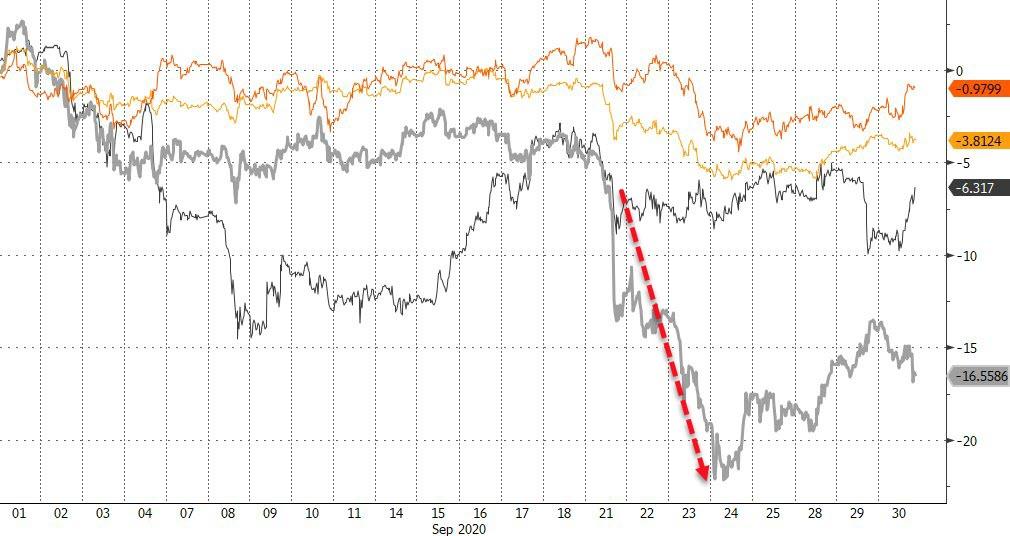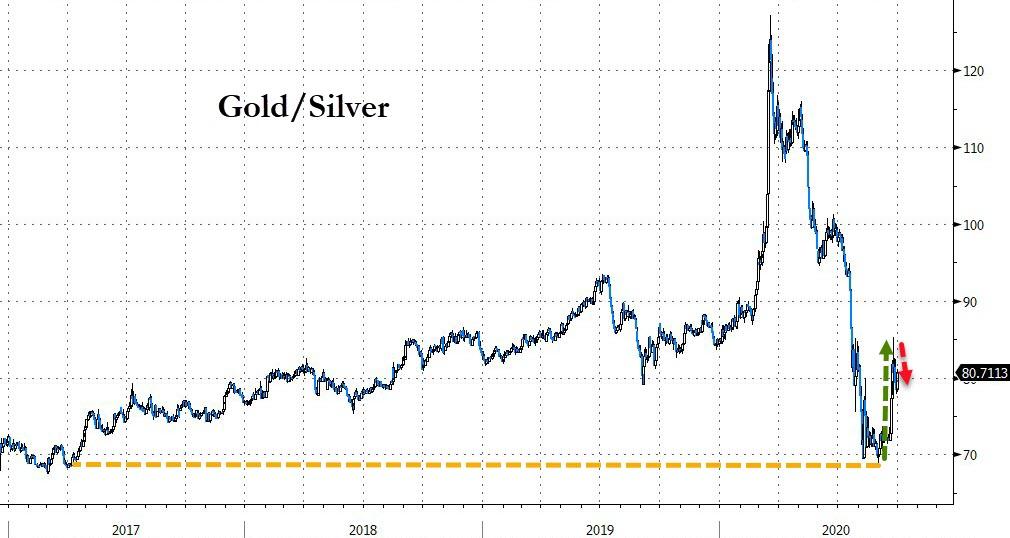Last night presidential debate moderator Chris Wallace asked President Trump, “You believe that human pollution, gas, greenhouse gas emissions contribute to the global warming of this planet?” Trump replied, “I think a lot of things do, but I think to an extent, yes. I think to an extent, yes, but I also think we have to do better management of our forest.”
The president added, “Every year I get the call. California’s burning, California’s burning. If that was cleaned, if that were, if you had forest management, good forest management, you wouldn’t be getting those calls.” As it happens, the federal government, which the president oversees, owns 57 percent of California’s forests, whereas state and local governments own around 3 percent. (The rest is in private hands.)
In the Trump administration’s latest budget request, the U.S. Forest Service asks for no funding for forest management practices such as prescribed burning or timber salvage. The agency says it has a backlog of 80 million acres in need of active management but plans to reduce fuel loads using current budget allocations on just over 1 million acres in 2021. While the president rightly complains about poor forest management, his administration is doing nothing to significantly reduce future wildfire risks on federal forest lands.
The president’s fleeting acknowledgment that man-made greenhouse gas emissions are contributing to climate change is a shift in tone at least from the president’s response during a briefing on California’s fires in Sacramento earlier this month. At that briefing, California’s Natural Resources Agency Secretary Wade Crowfoot urged the president to “recognize the changing climate and what it means to our forests.” Trump responded, “It will start getting cooler, just you watch.” Crowfoot countered that he wished the science agreed with the president. Trump replied, “I don’t think science knows, actually.”
Of course, there is no contradiction between the two concerns of climate change and poor forest management. Man-made greenhouse gases, chiefly carbon dioxide emitted into the atmosphere from the burning of fossil fuels, are responsible for most of the recent rise in the average temperature of the planet. And yes, decades of bad federal government forest management have contributed to the recent rising annual trend in burnt area in the western U.S. Rising temperatures and lengthier droughts in California are increasing the fire danger of badly managed overgrown federal forests in that state.
As an example of his commitment to addressing the problems of climate change, Trump declared, “We’re planting a billion trees, the Billion Tree Project and it’s very exciting for a lot of people.” The president did promise in his latest State of the Union speech that the “United States will join the One Trillion Trees Initiative, an ambitious effort to bring together government and private sector to plant new trees in America and all around the world.” In fact, no trees, much less a billion, have so far been planted at the behest of the Trump administration. The only activity so far is an EPA press release and a moribund bill in Congress.
For his part, former Vice President Joe Biden thinks that man-made climate change is a major problem and is responding with his plan for “a clean energy revolution and environmental justice.” Turning to Biden’s $2 trillion dollar plan to address climate change, moderator Wallace asked him about his goal of “ending the use of fossil fuels to generate electricity by 2035 and net-zero emissions of greenhouse gases by 2050. The president says a lot of these things would tank the economy and cost millions of jobs.”
In his response, Biden insisted that his climate plan spending would generate millions of new jobs building renewable power infrastructure, weatherizing millions of businesses and houses, and incentivizing the adoption of electric vehicles. Scanning through Biden’s plan, it’s uncanny how fixing the problems associated with man-made climate change just happens to coincide with the exact same economic policies long advocated by political progressives.
With respect to phasing out the burning of fossil fuels to generate electricity by 2035, Biden declared, “Nobody’s going to build another coal-fired plant in America.” He is quite likely right. In May, the Energy Information Administration (EIA) reported that the output of the U.S.’s fleet of coal-fired electric power generating plants in 2019 fell to the lowest level since 1976. In July, the agency noted that 2019 coal production dropped to its lowest level since 1978. Coal is being outcompeted by natural gas and renewable electricity generation. (Despite Trump’s promise to bring back coal, it’s worth noting that more than half of the coal mines operating in 2008 have now closed and that coal production employment continues its fall, dropping by 42 percent since 2011.)
In response to a question from the moderator about his administration pulling out of the Paris climate change agreement, Trump replied, “If you look at the Paris Accord, it was a disaster from our standpoint.” Why? At least in part because he thinks it’s disadvantageous for the U.S. “China sends up real dirt into the air. Russia does. India does. They all do. We’re supposed to be good,” he said.
In fact, China emits nearly twice as much greenhouse gases as does the U.S. which is in second place in the ranking of national emitters, followed by India and Russia. Keeping in mind the malleability of promises made by politicians, China’s leader Xi Jinping just pledged earlier this month that his country would “aim to have [carbon dioxide] emissions peak before 2030 and achieve carbon neutrality before 2060.” That Chinese carbon neutrality goal falls just 10 years later than Biden’s similarly proposed deadline for the U.S.
For his part, Biden pledged that the U.S. would rejoin the Paris climate change agreement.
Biden called out Trump for rolling back the Obama administration’s automobile fuel efficiency standards. “Why have you relaxed fuel economy standards that are going to create more pollution from cars and trucks?” he asked. Translating the president’s garbled response, the point that he seemed to be trying to make is that the lower standards would make new cars less expensive thus encouraging consumers to replace their old polluting clunkers much faster. My Reason Foundation colleagues point out fuel taxes instead of the cumbersome federal fuel efficiency standards that Biden wants to restore would be a much more efficient and less expensive way to incentivize the reduction of greenhouse gas emissions and other pollutants from automobiles.
Biden is also interested in the climate-friendly aspects of trees. “The rainforests of Brazil are being torn down, are being ripped down,” he asserted. “More carbon is absorbed in that rainforest than every bit of carbon that’s emitted in the United States.” Although it doesn’t appear in his formal climate plan, Biden seemed to be proposing in the debate that rich countries of the world pay Brazil $20 billion to stop ripping down its rainforests. Research suggests that the Amazon does annually absorb about 2.2 billion tons of carbon dioxide (about 5 percent of humanity’s annual emissions). On the other hand, more recent research projects that the Amazon and other rainforests are becoming fully saturated and may lose their ability to absorb additional carbon dioxide in the next couple of decades.
Toward the end of the debate segment on climate change, the two candidates sparred over the cost of Biden’s climate plan with Trump claiming it would cost $100 trillion which “is more money than our country could make in 100 years.” Trump may be channeling a cursory analysis by the conservative American Action Forum think tank of the ambitious 2019 Green New Deal (GND) proposal by Rep. Alexandra Ocasio-Cortez (D-N.Y.) and Sen. Ed Markey (D-Mass.). The AAF calculated it would cost between $52 trillion and $93 trillion. However, about 85 percent of the cost of the Ocasio-Cortez/Markey Green New Deal stems from a jobs guarantee (up to $44.6 trillion) and universal health care ($36 trillion). There’s every reason to think that Biden’s climate change plan numbers are cooked, but, contrary to Trump’s assertion, he is not aiming toward anything as costly as the Ocasio-Cortez/Markey plan. (For the record, U.S. GDP in 2019 was $21.5 trillion, so our country “could make” $100 trillion in under five years.)
Finally, one of the more amusing exchanges in this unedifying debate occurred when Biden said, “By the way, he has an answer for hurricanes. He said, maybe we should drop a nuclear weapon on them.” Trump replied, “I never said that at all. They made it up.” Biden’s assertion was evidently based on a 2019 article by Axios citing unnamed sources that Trump during a hurricane briefing suggested, “I got it. I got it. Why don’t we nuke them?”
As Snopes says, unproven.
from Latest – Reason.com https://ift.tt/2Gijyyt
via IFTTT

